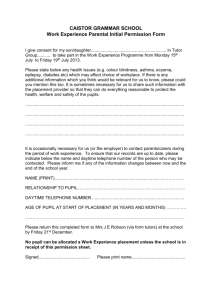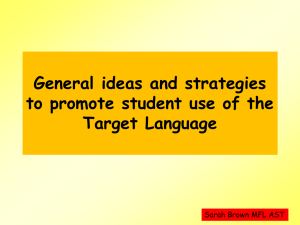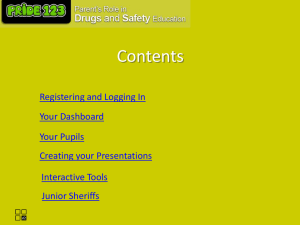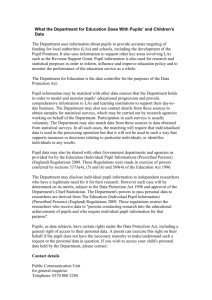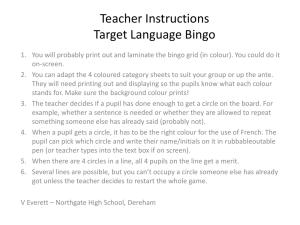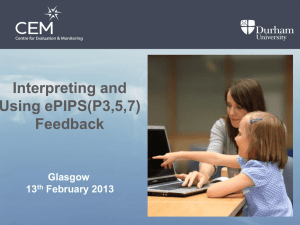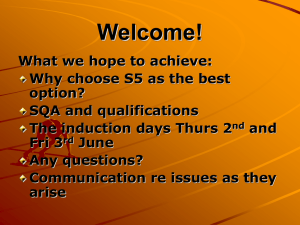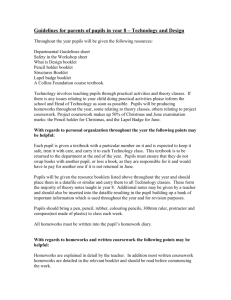MMU students KS3 Placement briefing
advertisement
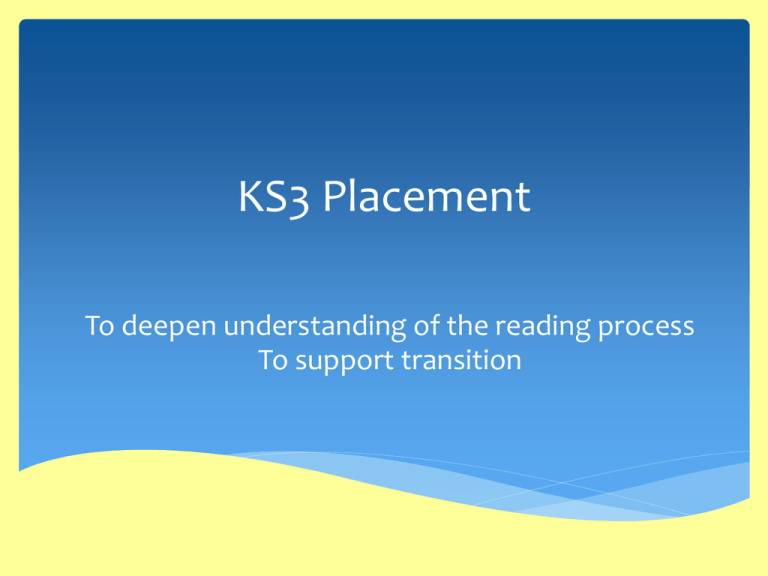
KS3 Placement To deepen understanding of the reading process To support transition Key Points Begins week 10, 7th October met by mentor 1 day a week for 8 weeks weeks 10,11,12or 13 depending on the school’s half term, weeks 14, 15, 16, SEN placement block, weeks 19 and 20 Working with 1 pupil in year 7 (some paired work) Negotiate with the school: 1 individual lesson (1 hour) each week Supporting pupil to access texts during some lessons Intended Outcomes MMU student Pupil and school Opportunity to apply and Struggling readers given practise the teaching of 1:1 support with reading reading Support given to access Deepen understanding of text across the curriculum the reading process Experience differences of Support transition to a secondary school KS3 environment and build environment awareness of transition Working with the School Find out how the school want you to work Which pupil(s)? Find out about them When? 1:1 slot may vary Where? A quiet space is needed for assessment How? Schools may have an established intervention or resources that they want you to use. Be prepared to assess, plan and teach with little guidance. Utilise the knowledge and experience you have gained and refer to the supporting booklet for information and resources to ensure a successful placement. Working with the Student The aim of the reading placement is to develop a reader’s independent processing power by teaching the strategies that good readers use. By the end of the placement the pupil should have developed: Some effective processing strategies Some strategies for working independently You may also notice: Increased self-esteem Improved attitude to reading Start with the Pupil Effective instruction is built on understanding a reader’s strengths and weaknesses Pupils may be hostile or anxious about reading, so be prepared to be empathic, resilient and creative Assessment Interview Miscue analysis (phonics) Reading Lesson Reading to the pupil/ Paired reading Pupil reading: Familiar text New text at instructional level Word study related to text Writing related to text Independent reading at easy level Oral reading and silent reading Steps for an effective lesson Build on a pupil’s prior knowledge, interests and enthusiasms Find suitable and engaging texts Share targets at the start of every session Teach in small steps and create opportunities for over-learning Give specific praise (not a commentary) and boost confidence Establish a sense of fun and purpose Model strategies and prompt pupils towards using them independently Allow pupils time and space to act independently Encourage pupils to think aloud and verbalise strategies Engage pupils in evaluating the effectiveness of their strategy choices Observe what pupils say and do, responding by shaping individualised instruction Key Areas Phonics and Word Reading Reading Fluency Comprehension: Learning about words How to interact with and explore text How to self-monitor comprehension Refer to the booklet to deepen understanding and find practical examples of activities Preparation Read the supporting booklet In the next English session we will: Explain in more detail how to do a miscue analysis Explore the booklet in more detail Discuss questions Reading around the subject such as: Blum, P. (2004) Improving Low Reading Ages in the Secondary School: Practical Strategies for Learning Support. London: Routledge Falmer
